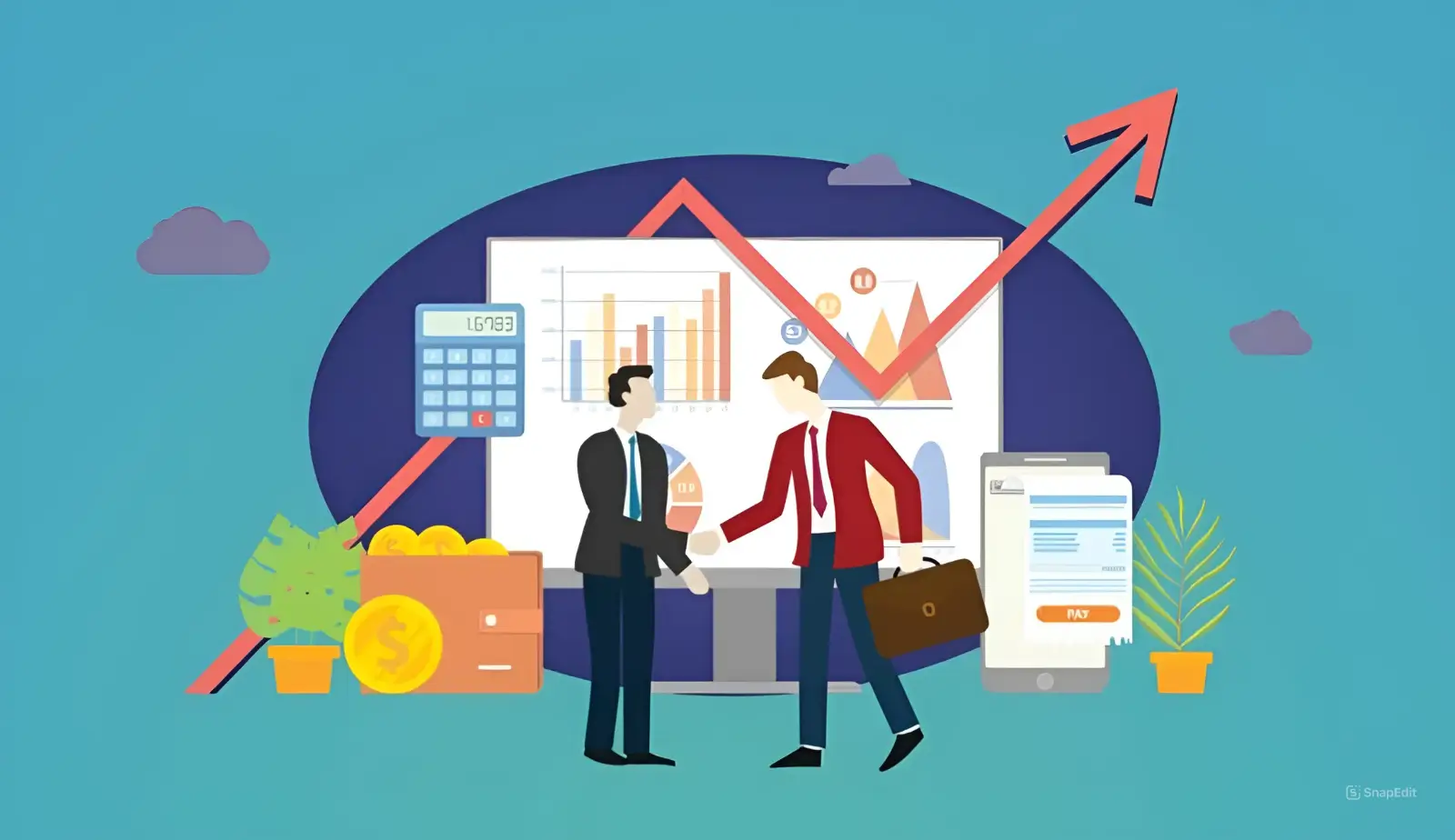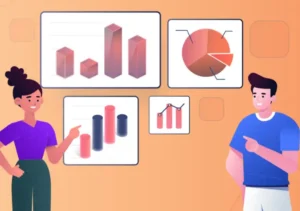Event Schedule | Event Location

In the ever-evolving landscape of B2B marketing, the quest to generate high-quality leads and drive business growth remains a top priority. One of the most effective and efficient strategies in this pursuit is B2B matchmaking.
B2B matchmaking acts as a powerful catalyst for lead generation success as it lets you build a connection with ideal prospects naturally.
At its core, B2B matchmaking involves the strategic pairing of businesses seeking products, services, or partnerships with potential clients or collaborators.
This process goes beyond traditional lead generation methods, as it leverages the expertise of event organizers, technology platforms, or networking initiatives to facilitate meaningful interactions between decision-makers.
The significance of B2B matchmaking in the marketing landscape cannot be overstated. It offers a unique opportunity to directly connect sales teams with the most relevant contacts at prospective customer organizations.
Whether through industry conferences, trade shows, or virtual events, B2B matchmaking serves as a conduit for building fruitful relationships that fuel business growth.
In this comprehensive guide, we will explore the ins and outs of B2B matchmaking for lead generation. We will delve into the strategies, best practices, and tools that empower you to maximize your success in leveraging this powerful approach.
B2B Matchmaking Explained
In a nutshell, B2B matchmaking brings together event attendees and representatives of event sponsors, based on shared interests. The goal of such a pairing is to conduct short but productive meetings during the event.
These meetings serve as a platform for participants to exchange knowledge, explore potential synergies, and assess the viability of a partnership.
If the initial meeting shows promise, the participants may agree to schedule a follow-up meeting after the event to further nurture and develop the potential partnership.
The Significance of B2B Matchmaking as a Lead Generation Technique
B2B matchmaking stands out as a pivotal technique that offers numerous advantages for businesses seeking to expand their customer base and drive revenue growth.
Here are some key reasons why B2B matchmaking holds immense significance as a lead generation strategy:
Targeted Connections: B2B matchmaking allows businesses to connect with their ideal prospects in a highly targeted manner.
Efficient Use of Resources: Unlike traditional lead generation methods that often involve extensive outreach efforts, B2B matchmaking optimizes the use of resources. Through curated meetings, businesses can engage in meaningful interactions with decision-makers who have already expressed interest in their industry or solution.
Enhanced Conversion Rates: The personalized interaction and tailored approach significantly improve the chances of converting leads into actual customers or partners.
Long-Term Relationship Building Opportunities: Successful lead generation goes beyond just acquiring customers; it involves establishing long-term, mutually beneficial relationships.
Tangible Return on Investment: B2B matchmaking provides a tangible return on investment by directly connecting businesses with qualified leads.
Average Cost of B2B Matchmaking Meetings
The average cost of a B2B matchmaking meeting at events typically ranges from $800 to $1600, with pricing varying based on the seniority level of the audience. C-level meetings generally have a higher cost per meeting compared to director-level meetings.
The 7 Key Stages of B2B Matchmaking Events
The 7 stages of B2B matchmaking events provide a roadmap for participants to navigate and capitalize on the opportunities presented. Here are the key stages:
Stage 1 – Selecting Your Areas of Interest and Expertise
This crucial step involves creating a comprehensive profile that highlights your business offerings, industry expertise, and specific areas of interest.
During profile creation, take the time to identify and specify the areas of interest that align with your business goals. This could include specific industries, target markets, products or services, technologies, or collaboration opportunities.
By clearly articulating your areas of interest, you provide event organizers with valuable information to facilitate meaningful matches.
Stage 2 – Pre-Qualifying the Delegate Lists
Pre-qualifying the delegate lists is a crucial stage in B2B matchmaking events that allows you to maximize your event ROI.
Once the event organizer shares a list of confirmed delegates, it is your responsibility to carefully assess and pre-qualify this list to ensure the most valuable meetings.
Firstly, avoid scheduling meetings with individuals you already know. While it may seem obvious, it’s a common oversight that can waste your valuable meeting slots. Focus on meeting new prospects who align with your target accounts and offer fresh opportunities.
Additionally, when multiple attendees from the same account are present at the event, prioritize meeting with just one representative from each account.
Stage 3 – Facilitating Matchmaking: The Role of Event Organizers
After pre-qualifying the delegate list and communicating your meeting preferences to the event organizer, the matchmakers take charge of facilitating the matchmaking process.
Their primary objective is to secure meetings that align with your priorities and create a schedule that maximizes the value of your interactions.
They give priority to your meeting requests and do their best to secure meetings with the desired individuals for your sales team. Simultaneously, they also consider the preferences of the event attendees, who can submit their own requests to meet with specific sponsors.
Stage 4 – Meeting Schedule Confirmation and Last-Minute Adjustments
As the B2B matchmaking event approaches, a few days prior to the event, your meeting schedule will become available.
During this stage, it is common to have a series of calls with the event organizer to review the meeting schedule and address any last-minute changes. These calls serve as an opportunity to ensure that the scheduled meetings align with your objectives and preferences.
In some cases, you may find that there are meetings on your schedule that you didn’t initially request or that new delegates have confirmed their attendance at the event. It is essential to be assertive and communicate your preferences to the event organizers.
Clearly express your expectations and ensure that you are meeting with the right people who align with your target accounts and business goals.
Stage 5 – Meeting Preparation
As stage 5 approaches, your sales team must be prepared for the meeting. As a marketer, you need to ensure to brief them on the event and provide all the necessary information.
Take advantage of the B2B matchmaking platform where event attendees fill out their profiles. This allows you to gain insights into their interests and the challenges they are looking to address.
Emphasize to your sales team that these meetings are not an opportunity to pitch your product. Instead, they should focus on active listening and understanding the challenges your prospects are facing.
Encourage them to use this information to tailor their approach and secure follow-up meetings.
Ask your sales team to research the LinkedIn profiles of the meeting partners. Look for connections you may have in common and gather information about their companies.
Stage 6 – Conducting Productive Meetings
Stage 6 of B2B matchmaking events are dedicated to conducting productive meetings that maximize engagement and value for both parties involved.
Instead of delivering a product pitch, the emphasis should be on understanding their specific needs and challenges.
To ensure the meeting is structured and productive, begin with a concise introduction to establish a positive and welcoming atmosphere. Take the time to understand the challenges your meeting partners are facing, both on a personal and professional level.
Throughout the meeting, maintain an open dialogue, ask thoughtful questions, and actively listen to their responses.
Before concluding the meeting, ensure there is a clear agreement on the next steps. This may involve scheduling a follow-up meeting, providing additional information or resources, or connecting with other stakeholders within their organization.
Stage 7 – Following Up on Meetings
In the final stage, following up on your meetings is essential to nurture connections and drive continued success.
Once the event concludes, it is crucial to promptly reach out to your meeting partners. Timely communication demonstrates your commitment and keeps the conversation fresh in their minds.
Ensure your sales team contacts them within a reasonable timeframe to express appreciation for the meeting and reiterate your interest in further collaboration.
Collaborate with your Marketing Operations team to load the contact details and relevant information from the meetings into your CRM system.
Craft a personalized follow-up plan for each meeting partner based on their unique needs and interests.
Finally, implement a system to track and measure the results of your follow-up efforts. Monitor key metrics such as engagement, conversions, and opportunities generated from the B2B matchmaking meetings.
Ideal B2B Matchmaking Sponsorship Package
When evaluating a B2B matchmaking sponsorship package, it’s important to consider several factors to ensure it aligns with your business objectives and provides a valuable return on investment. Here are some key elements to look for:
Meeting Guarantees: One crucial aspect to examine is the number of guaranteed meetings offered in the sponsorship package. This provides an indication of the level of engagement and networking opportunities you can expect. Typical ranges may vary from 10 to 25 meetings.
Event Audience Size: Consider the expected size of the event audience. A larger audience generally offers more potential meeting opportunities. However, it’s crucial to evaluate the quality of the audience as well.
No-Show Prevention: Inquire about the event organizer’s strategies to reduce no-shows. No-shows can be frustrating and waste valuable time and resources.
Follow-Up Meeting Arrangements: Some event organizers go the extra mile by facilitating follow-up meetings between sponsors and attendees. This additional service can be highly beneficial as it creates an opportunity for further engagement beyond the initial matchmaking meetings.
Tips to Maximize Your B2B Matchmaking Meetings
- Establish a streamlined process for your sales team to ensure efficient and effective meeting preparation and execution.
- Understand the personal and professional challenges faced by your meeting partners. Discover what they stand to gain personally when these challenges are resolved.
- Resist the temptation to pitch your product or service during the meeting.
- Take the time to educate the event matchmakers about your offering.
- Don’t just move on to the next activity after the event. Collaborate with your sales team to evaluate the outcomes and ROI of the B2B matchmaking event.
The Bottom Line
B2B matchmaking events provide a valuable opportunity for marketers to connect their sales teams directly with relevant prospects, ultimately leading to eternal B2B relationships.
Make sure to utilize B2B matchmaking and implement the tips and strategies discussed in this guide to successfully connect with the right prospects, forge meaningful relationships, and drive business growth in the competitive B2B landscape.



